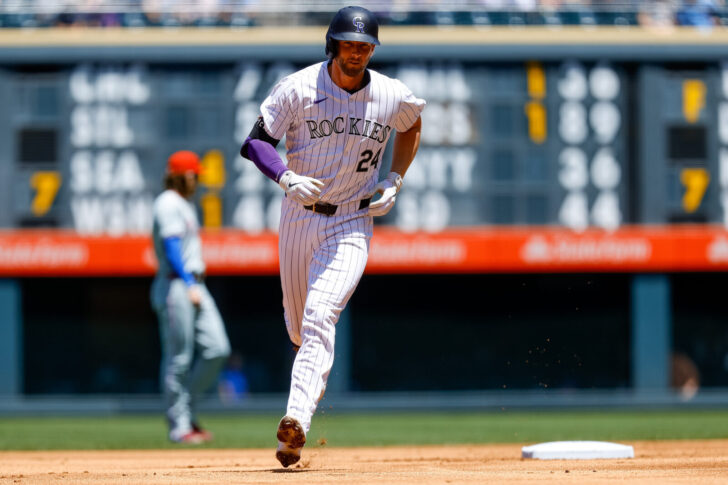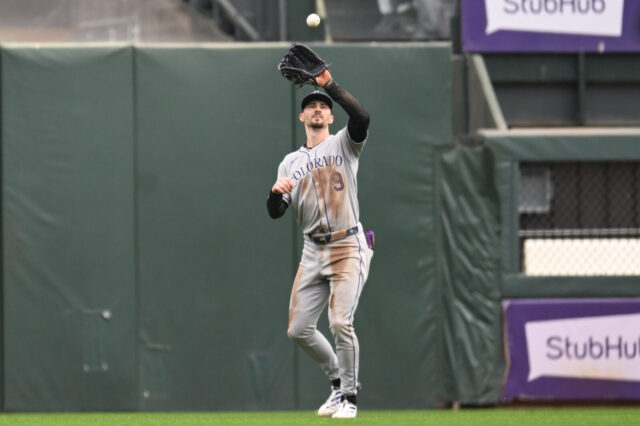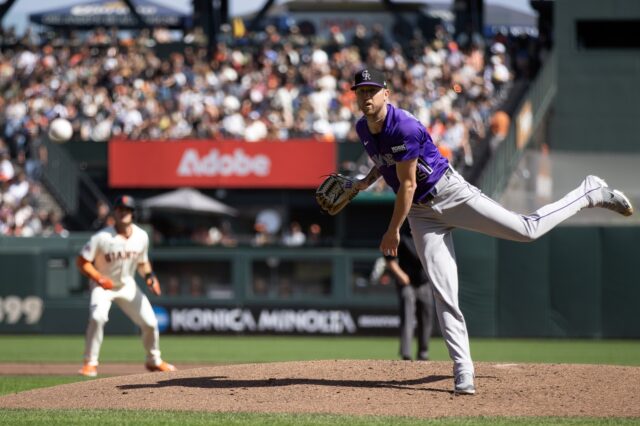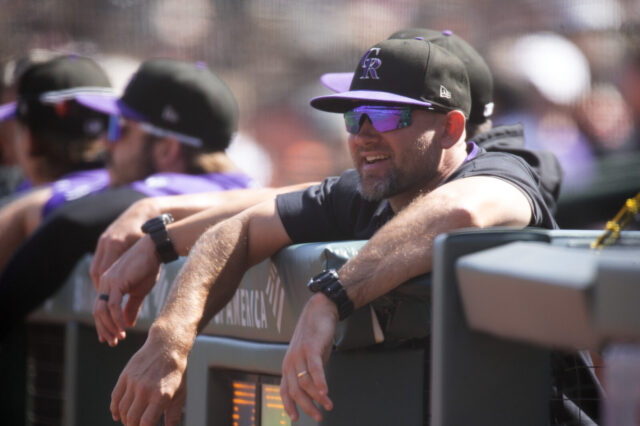Strike 1: The preferred term now is “reconstruction” rather than rebuilding. Regardless, the never-ending project that is the Colorado Rockies churns along, with glimmers of hope mixed in with harsh realities.
Youthful mistakes. Injuries. Players young – and not so young – not measuring up to projections.
Reconstruction is hard.
But the hard is what makes it great, right?
The Rockies brass isn’t giving up, and they absolutely want to put a winning team on the field at 20th and Blake. Yet in order to do so, they’re clearly going to have to confront something they’ve steadfastly avoided to this point: Very soon, the Rockies are going to have to part with something – or someone – they don’t want to part with.
“I wouldn’t be opposed to that,” Manager Bud Black told me prior to Sunday’s home loss to Pittsburgh. However, ultimately it’s not his decision.
Trading hasn’t been Colorado’s best thing in recent years. Ever since former general manager Dan O’Dowd went on his infamous trading spree two decades ago, the Rockies have always erred on the side of caution. Big trades – like moving Matt Holiday, Troy Tulowitzki or Nolan Arenado – were done out of necessity, forced by some combination of the player and agent wanting out and the organization’s finances, rather than any effort to improve the team. They’ve always held on to – some say overvalued – what they had, and been unwilling to deal from a position of strength. Go ahead and google Ian Stewart.
For several years now, pretty much since another former GM, Jeff Bridich, left town, the Rockies have been trying to stockpile young talent. And in an unbalanced way, it’s sort of working. They have numerous young position players who appear ready to make a mark in the big leagues sometime soon. But the pipeline – at least at the end that is closest to Coors Field – is devoid of major league pitching talent, at least to this point.
This is where most MLB franchises would take the excess they enjoy at a particular position – say middle infield if you’re the Rockies – and try to make a trade that would bring back some pitching that’s close to big league ready to fill that void.
But the Rockies haven’t operated like most big league franchises in that respect.
Recent call up Adael Amador is a prime example. He may not be quite ready for everyday MLB duty at second base, but he’s getting closer and his ceiling is very high. He was brought up for an audition when former Gold Glove winner Brendan Rodgers had to go on the injured list. When Rodgers is healthy, Amador will likely be sent back down for more seasoning.
In a perfect MLB trade scenario, Rodgers would resume his season and play well, improving his trade value while Amador improves his overall game in the minors. Then just over a month from now, Rodgers could be traded to a contender in need of infield help (the Dodgers just lost Mookie Betts for a long spell) for a top pitching prospect and Amador could take over at the position.
However, history says the Rockies won’t want to part with Rodgers. Because they never have.
He’s not the only Rockie with trade value right now. That list would include Ryan McMahon and Elias Diaz as well, but it’s been reported that the Rockies do not want to break up the left side of their infield, and trading McMahon is not on the table. Diaz will be a free agent at the end of the season, making him a prime trade candidate. But so were Trevor Story and Jon Gray, and the Rockies got only draft picks back when they left as free agents.
They value Diaz – and his backup Jacob Stallings – and probably don’t want to trade either of them, too.
Alas, if the reconstruction is going to ever come to successful completion, thought processes have to change. Pitching is tough for every team to come by, especially now when it seems like they all end up getting elbow surgery. The Rockies will not be able to exclusively draft and develop their own pitchers. The time is coming soon when trades that might hurt a little, and might actually benefit both teams, are going to have to be made.





